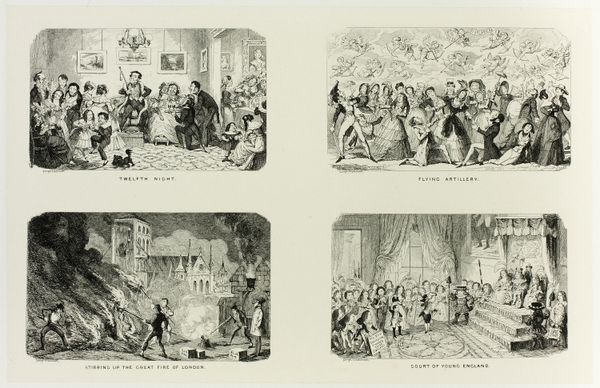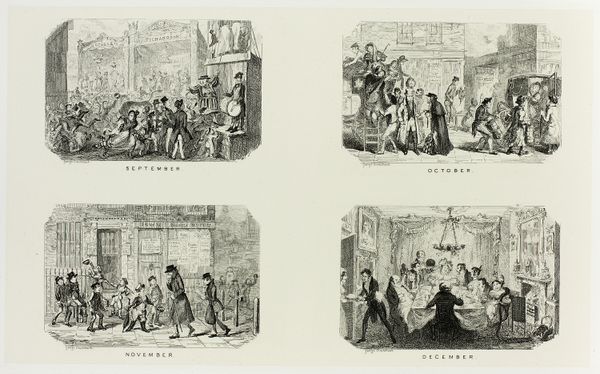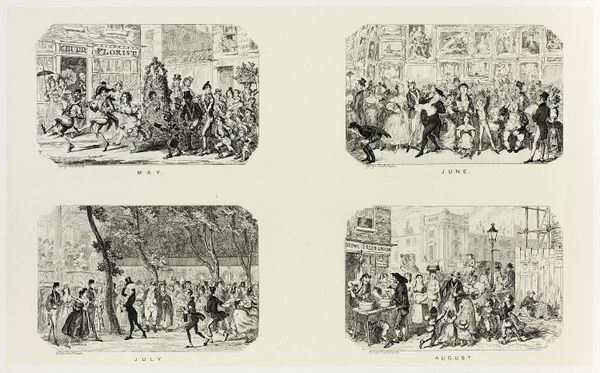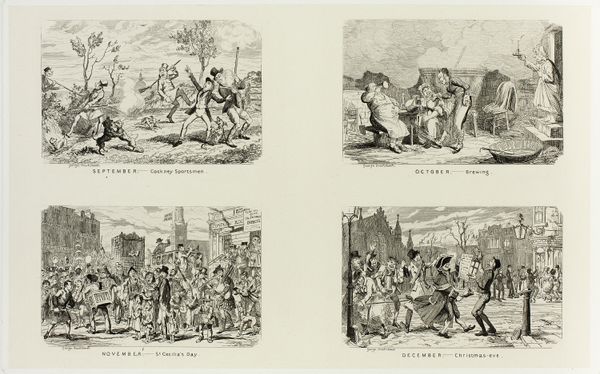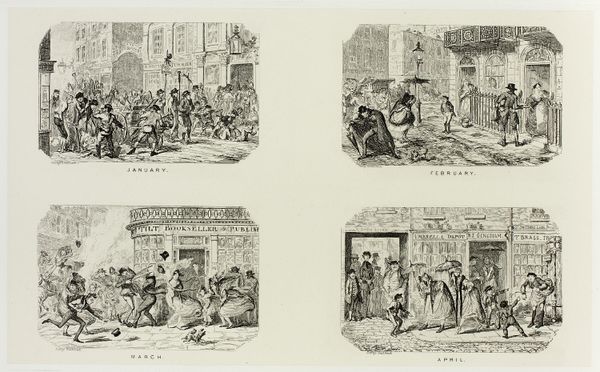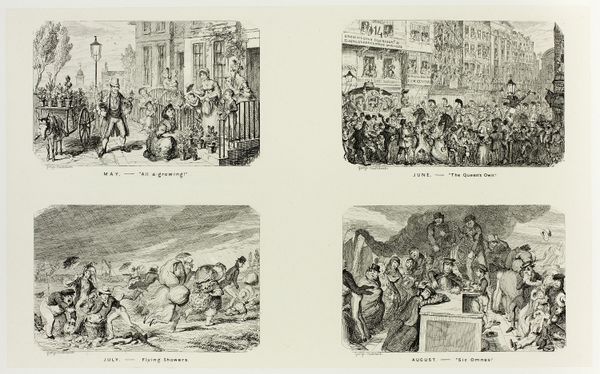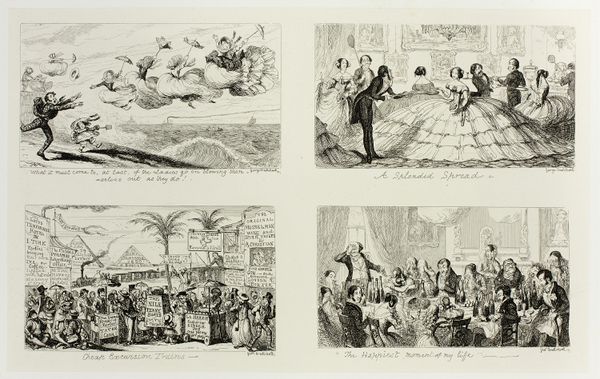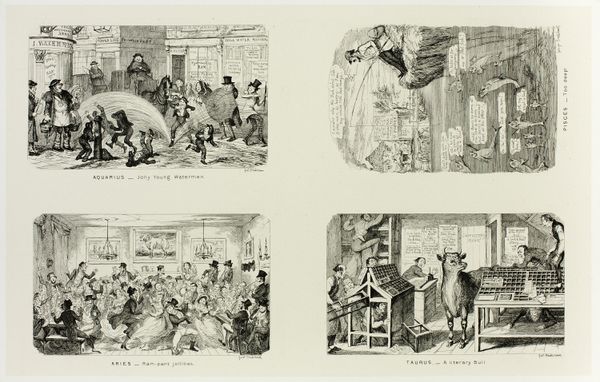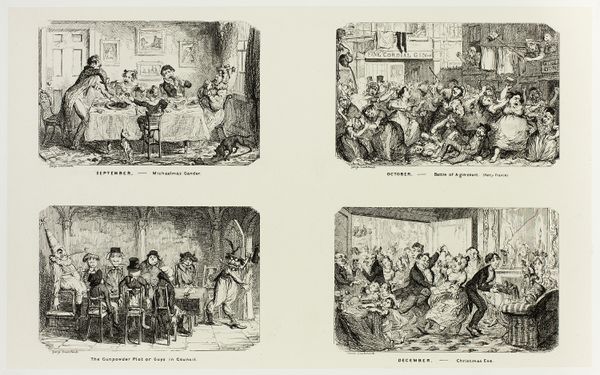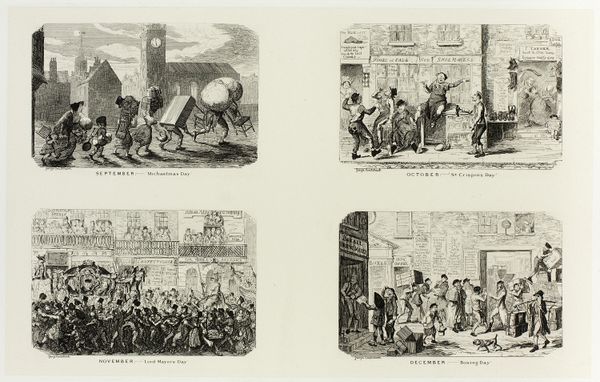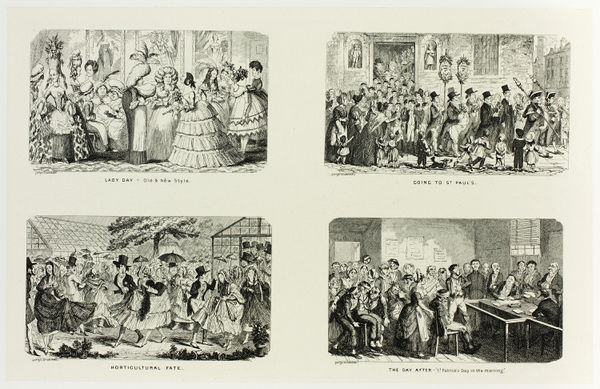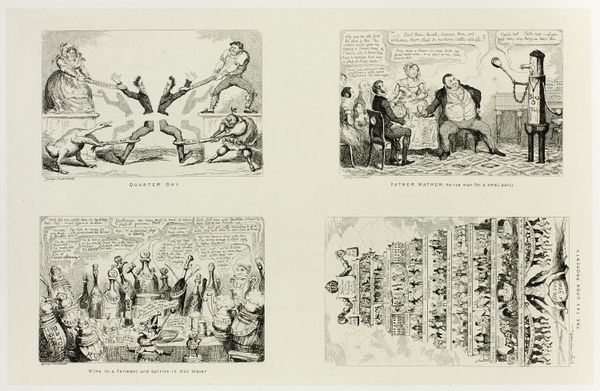
May – "Old May Day" from George Cruikshank's Steel Etchings to The Comic Almanacks: 1835-1853 (top left) c. 1836 - 1880
0:00
0:00
Dimensions: 207 × 334 mm (primary support); 343 × 506 mm (secondary support)
Copyright: Public Domain
Curator: Welcome. We’re looking at “May – ‘Old May Day’,” a steel etching by George Cruikshank, made sometime between 1836 and 1880. Editor: What a lively scene! I see a swirling, joyous dance around a maypole. The composition, though densely packed with figures, creates a wonderful sense of kinetic energy. Curator: Indeed. Cruikshank was well-known for his illustrations and caricatures, and this print exemplifies his style. As an etching, it would have allowed for relatively quick reproduction and dissemination. Consider how that accessibility shapes the image’s reception, reaching a broad audience and perhaps informing public sentiment regarding traditions and holidays. Editor: I'm drawn to the maypole itself – a phallic symbol, clearly – representing fertility and the renewal of life after winter. It's surrounded by dancers, most likely young villagers, celebrating the arrival of spring. Note the careful detail paid to the figures, though they're rendered small, each carries its own expression. Do you think the scene is more idealized or satirical? Curator: Probably both! Romanticism had a heavy influence during the time, however this piece could be interpreted either way. Let’s not overlook the surrounding context of agricultural labor. The May Day holiday historically served as a moment of communal gathering, celebration, and a temporary respite from the agricultural cycle. It was also a means for socializing, exchanging information, and solidifying community bonds, perhaps also about to evolve as industrial practices gained strength. Editor: I see the echoes of pagan rituals in the imagery; it's fascinating to witness how these ancient symbols adapt and persist through centuries of changing social landscapes. The architecture visible in the background—is that meant to signal a specific locality? Curator: Potentially, yes. It is also quite standard imagery found in much artwork during that time. Editor: Fascinating how the celebration seems both timeless and anchored to a very specific moment. It’s given me much to consider in the ongoing evolution of visual language. Curator: For me it serves as a reminder of the importance of considering social and economic conditions in artwork and understanding the relationship between materials, means of production, and consumption.
Comments
No comments
Be the first to comment and join the conversation on the ultimate creative platform.
